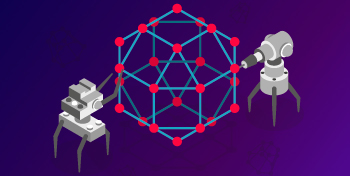Let’s agree right away that our view will concern the purely technical side of the issue of Bitcoin’s energy intensity.
By design, cryptocurrencies such as Dogecoin, Litecoin and Bitcoin are expensive and energy-intensive products. Since cryptocurrencies are expensive, they should not be very popular – they should be a niche tool for specialists. With a small number of users, their total energy footprint will be tiny.
But a strange thing happened. These expensive products have become popular. Their energy footprint has reached epic proportions, angering environmentalists. Well, of course, to consume more electricity than Argentina. A nightmare!
Given that cryptocurrencies are so expensive, why did ordinary people accept them? This responsibility lies with the non-transparent method of payment by users of distributed registries. If the costs of using distributed registry services were more transparent, ordinary users would not switch to cryptocurrencies such as Bitcoin. With fewer users, their environmental impact will not be controversial.
Distributed registries are not cheap
A centralized ledger requires only one computer to store and update it.
However, updating and securing the distributed registry requires the efforts of thousands of competing computers, known as miners. We will not describe in detail how this process works now. Suffice it to say that the process of creating a trustworthy distributed registry that is stored on many computers, not on one, and requires huge energy costs from miners.
Since centralized registries do not require thousands of processors to copy each other’s efforts, the cost of maintaining them is many times cheaper than maintaining a distributed registry.
So, which people want to buy expensive places in a distributed registry?
One of the types of buyers is a new generation of anti-centralization connoisseurs. These amateurs want to resist centralization, and want to have financial products such as Dogecoin, Bitcoin and Litecoin that are consistent with their point of view. They like the lack of centralization, and they are willing to bear much higher costs.
The choice of the degree of centralization is very similar to the consumer’s choice between a Hummer or a Honda Accord. Most people will take the Accord, but some will want a Hummer. They feel that they need additional services that a Hummer can provide, for example, climbing a mountain. And they are willing to pay much higher fuel bills for the Hummer.
But there are few real connoisseurs of anti-centralization. Only a handful of amateurs really care about the degree of centralization. They belong to the same category as audiophiles who argue about the advantages of silver speaker cables compared to copper ones. Most of us just roll our eyes.
Not only is the degree of centralization an incomprehensible topic, distributed registries are more difficult to use than centralized ones, which requires a completely new set of skills.
Given that cryptocurrencies are specialized, complex and expensive, one would expect that only a few nerds would buy them. But this is not the case. Your daughter has a Dogecoin. Your neighbor is speculating on Litecoin. Your boss loves Bitcoin.
It should be said that the big driving force behind the mass implementation was the opaque method of payment for distributed registries. You may ask: does this mean that distributed registries are not free?
Of course they are not free!
The high cost usually dissuades ordinary users from purchasing niche products, such as silver speaker cables or a Hummer. Hummer-it hurts, you can afford it. The weekly gas bills are huge, and they make such a hole in the family budget that you can drive the same Hummer. And I don’t want to talk about car insurance.
But the costs of maintaining distributed registries are not paid directly from the personal reserves of Dogecoin or Bitcoin. They are (mostly) financed by the issuance of new coins. In the case of Dogecoin, 10,000 new Dogecoins are created every minute as compensation for miners. With Litecoin, 12.5 new Litecoins are paid out every 2.5 minutes, and with Bitcoin, 6.25 new BTC are awarded to miners every 10 minutes.
Relying on new coins to pay for miners separates cryptocurrency users from the tangible costs of providing them.
In other words, imagine that you could own a Hummer without this merciless pain associated with regular gas bills or insurance. It’s a bit like using Dogecoin or Bitcoin. Someone who owns, or HODL, indulges their decentralized preferences. But they do not directly bear the running costs associated with the provision of these services. They perceive distributed registries as free, although in fact they are not.
What about coin inflation?
But, of course, the constant increase in the supply of coins is a tangible price. At the end of each minute, 10,000 new Dogecoins are created to pay miners. Don’t these new coins cause the prices of all existing Dogecoins to fall? Given that the value of their assets is constantly eroding, don’t Dogecoin owners realize the cost of a distributed registry?
Not so. In the case of cryptocurrencies, the cost of new coins is capitalized in price.
Let me decipher what this means. The Dogecoin price already includes the fact that Dogecoin miners are paid a periodic fee. And therefore, the value of Dogecoins does not fall every time a reward is paid to miners.
Here is an analogy. Every two weeks, Microsoft must pay its employees. But if you own Microsoft shares, the price of these shares does not fall every time payday comes. Microsoft’s share price already includes information that the salary should be paid.
The same is true with Dogecoin. The fee paid to miners, using the example of Microsoft’s salary, is already included in the Doge price.
And therefore, the owner of Dogecoin never feels the painful costs of a distributed registry. They don’t pay the weekly bills as if they had a Hummer. The value of their Dogecoin holdings is not falling every minute due to inflation. But even in this case, these are quite real costs.
Distributed Registries Are More Popular Than They Should Be

If users were more acutely aware of the high cost of distributed registries, cryptocurrencies would never have become so popular.
Most of the people who flock to Dogecoin, Litecoin and Bitcoin are not experts in decentralization. They know little about the product and, of course, are not interested in paying more for its consumption.
They want to see a funny rotating magic number on the screen. They want to become millionaires. Whether they achieve millionaire status through more or less centralized methods is mostly meaningless for them.
Usually, high fees dissuade the unwashed from buying niche products, such as distributed ledgers, silver speaker cables or Hummers. But since these costs are hidden deep in the prices of Dogecoin, Litecoin and Bitcoin, the owners of these products do not experience them directly. Mistakenly perceiving distributed registries as free, they accumulate.
What if the value of cryptocurrencies was not so opaque?
For example, each Dogecoin owner had to pay the miners a per-minute fee out of his own pocket. True connoisseurs of anti-centralization will be happy to pay, but ordinary users, faced with a transparent price for distributed registry services for the first time, would panic and quickly leave their Dogecoin positions. The same is true with Litecoin and Bitcoin.
Critics are dissatisfied with the energy consumption of cryptocurrencies. But the problem is not in the energy needs of these products. Let the niche communities enjoy their strange and energy-intensive activities.
Rather, it is worrying that the majority of cryptocurrency consumers do not realize the true cost of the services they use. The vast majority of crypto users do not even understand what they are dealing with. It is enough for them that “it” brings them income, and they are absolutely not interested in the technical side.
So, these very, very expensive products accidentally became mainstream.


